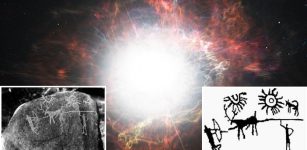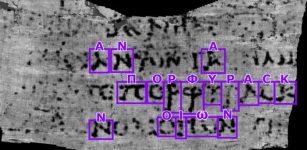Ancient Monuments The World Is Not Allowed To See – Forbidden Zone – Part 2
Ellen Lloyd - AncientPages.com - We continue our investigation of ancient monuments the world for some reason is not allowed to see. As explained in part 1, it is very difficult to understand why some governments do not permit archaeologists and historians examination of ancient monuments, tombs, artifacts, prehistoric skeletons.
There are several documented cases when scientists have been strongly discouraged from examining ancient sites. Sometimes accessing forbidden archaeological sites can have severe consequences.

Credit: Maxim B - Adobe Stock
What secrets do these ancient places hide? We will never know our planet's true history if some governments refuse to allow archaeological excavations and prevent scholars from reviewing the country's ancient historical records.
Time is running out. Natural disasters are a constant threat to countries located in vulnerable areas.
Archaeologists must be allowed to preserve historical data before it is too late and ancient monuments vanish underwater.
Ancient history does not belong to one or two specific countries, but to the entire human race and its future generations.
Why do some authorities pretend these ancient mysterious structures do not exist?
This is a preview of our premium article available only to members of Ancient Pages.
Become a member to read more - Click here
If you are already a member and have logged in to your account, you can access the article here
See also:
Riddle Of An Ancient Underground City No-One Thinks Exist - Part 1 - 2
Is There An Over-Looked Ancient Secret In Sahara?- Intriguing Theory Examined
Mysterious City Lost In The Sands And Its Hidden Treasures
Antediluvian Time-Capsule Hidden In Forbidden Ancient Egyptian Crypts?
More From Ancient Pages
-
 Pyramid Of The Moon At Teotihuacán – Underground Tunnel And Chamber Found
Archaeology | Oct 29, 2018
Pyramid Of The Moon At Teotihuacán – Underground Tunnel And Chamber Found
Archaeology | Oct 29, 2018 -
 Extraordinary 5,000-Year-Old Astronomical Event Depicted On Indian Rock Carving
Archaeoastronomy | Jan 9, 2018
Extraordinary 5,000-Year-Old Astronomical Event Depicted On Indian Rock Carving
Archaeoastronomy | Jan 9, 2018 -
 Biblical Mystery Of Urim And Thummim: God’s Puzzling Communication Devices
Ancient Mysteries | Jun 18, 2017
Biblical Mystery Of Urim And Thummim: God’s Puzzling Communication Devices
Ancient Mysteries | Jun 18, 2017 -
 Forbidden Underwater Discovery Could Re-Write Ancient History But The Investigation Was Stopped
Ancient Mysteries | Aug 27, 2019
Forbidden Underwater Discovery Could Re-Write Ancient History But The Investigation Was Stopped
Ancient Mysteries | Aug 27, 2019 -
 Rare Medieval Seal Matrix Found By 10-Year-Old Boy In UK
Artifacts | Apr 5, 2022
Rare Medieval Seal Matrix Found By 10-Year-Old Boy In UK
Artifacts | Apr 5, 2022 -
 Who Can Solve The Shackleton Scribble Mystery?
Artifacts | Sep 13, 2017
Who Can Solve The Shackleton Scribble Mystery?
Artifacts | Sep 13, 2017 -
 Outstanding Unfinished Ancient Marble Carving Of A Lion’s Head Found Near Selinunte, Sicily
Archaeology | Sep 2, 2023
Outstanding Unfinished Ancient Marble Carving Of A Lion’s Head Found Near Selinunte, Sicily
Archaeology | Sep 2, 2023 -
 Modern Humans Have Their Homeland In Botswana – New Study
Archaeology | Oct 29, 2019
Modern Humans Have Their Homeland In Botswana – New Study
Archaeology | Oct 29, 2019 -
 Mystery Of The Brave Viking Chief Buried On The Gokstad Ship
Featured Stories | Mar 14, 2016
Mystery Of The Brave Viking Chief Buried On The Gokstad Ship
Featured Stories | Mar 14, 2016 -
 Lost Maya City Hidden In The Volcanic Lake Atitlán Explored By Underwater Archaeologists
Archaeology | May 4, 2022
Lost Maya City Hidden In The Volcanic Lake Atitlán Explored By Underwater Archaeologists
Archaeology | May 4, 2022 -
 Horus – One Of The Most Important Ancient Egyptian Gods And Symbol Of Rulership and Justice
Egyptian Mythology | Jun 26, 2018
Horus – One Of The Most Important Ancient Egyptian Gods And Symbol Of Rulership and Justice
Egyptian Mythology | Jun 26, 2018 -
 Eurasian Horse Riders Played Ball Games 3,000 Years Ago – Leather Balls Found In Graves Reveal
Archaeology | Oct 12, 2020
Eurasian Horse Riders Played Ball Games 3,000 Years Ago – Leather Balls Found In Graves Reveal
Archaeology | Oct 12, 2020 -
 Struggle To Get Mail On Time Has Lasted More Than 5,000 Years – Part 1
Featured Stories | Jul 30, 2017
Struggle To Get Mail On Time Has Lasted More Than 5,000 Years – Part 1
Featured Stories | Jul 30, 2017 -
 Ancient Board Game Mancala Can Unlock Cutting-Edge Physics Discoveries
Artifacts | Sep 30, 2023
Ancient Board Game Mancala Can Unlock Cutting-Edge Physics Discoveries
Artifacts | Sep 30, 2023 -
 Major Breakthtrough – Ancient Herculaneum Scroll Deciphered For The First Time
Artifacts | Oct 20, 2023
Major Breakthtrough – Ancient Herculaneum Scroll Deciphered For The First Time
Artifacts | Oct 20, 2023 -
 Trajan’s Market Was The World’s First Known Shopping Mall
Ancient History Facts | Jul 2, 2016
Trajan’s Market Was The World’s First Known Shopping Mall
Ancient History Facts | Jul 2, 2016 -
 Hundreds Of Ancient Sealed Wine Jars Found In Mysterious Tomb Of Meret-Neith In Abydos
Archaeology | Oct 2, 2023
Hundreds Of Ancient Sealed Wine Jars Found In Mysterious Tomb Of Meret-Neith In Abydos
Archaeology | Oct 2, 2023 -
 Impressive Huge Ancient Lamassu Statue Unearthed In Nineveh, Iraq
Archaeology | Oct 28, 2023
Impressive Huge Ancient Lamassu Statue Unearthed In Nineveh, Iraq
Archaeology | Oct 28, 2023 -
 Ancient Wall Of Lolei Temple Built In 893 BC Unearthed In Siem Reap, Cambodia
Archaeology | Apr 20, 2020
Ancient Wall Of Lolei Temple Built In 893 BC Unearthed In Siem Reap, Cambodia
Archaeology | Apr 20, 2020 -
 The Untold Story Of Sacsayhuamán – Falcon’s Place Is Not What It Seems
Ancient Mysteries | Apr 28, 2020
The Untold Story Of Sacsayhuamán – Falcon’s Place Is Not What It Seems
Ancient Mysteries | Apr 28, 2020


